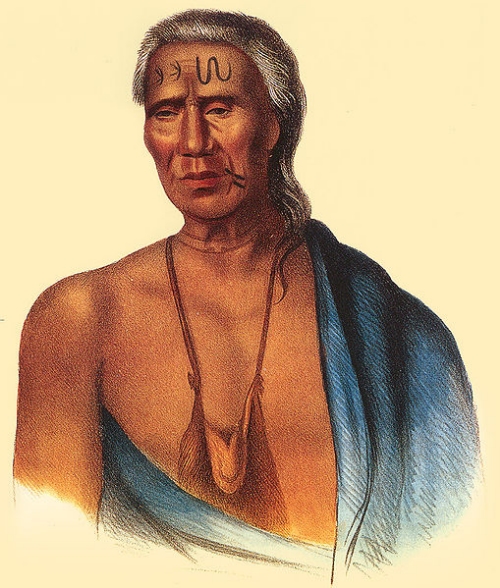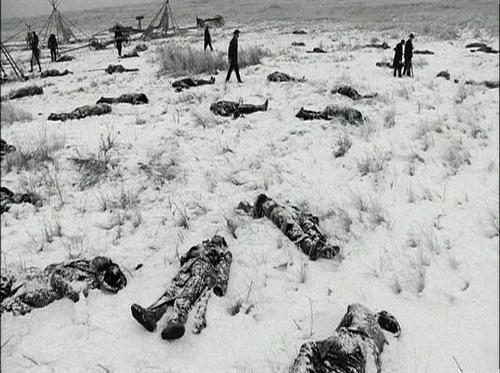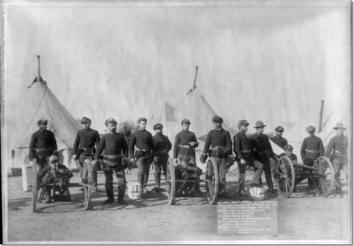
Contemporary Issues
I. Loss of religious freedom
A. Introduction of Christianity (Note: I have provided links to websites that give more information. Take what you read from the religion owned websites with a grain of salt - for example the Catholic bishops say, "Families that responded to the Gospel in the seventeenth century in what are now the states of Arizona, Florida, Maine, Michigan, New Mexico, New York, and Texas remain faithful Catholics nearly four hundred years later." They don't mention the Pope rebellion of 1670 where every priest and Spaniard was killed or driven away from New Mexico for nearly 100 years. When you look at the Later-Day Saints website, remember that although the LSD church members believe that American Indians are Jews, there is no genetic link between the Israelites and Native Americans. These religious beliefs are matters of faith and not fact. This discussion will not include the validity of any faith, superstition, or form of magical thinking. Only the similarities between Native and European religion and the impact the practitioners of any religion have had on American Indian people will be addressed.
1. Why Native Americans were attracted to Christianity, and Catholicism in particular. Keep in mind as you read this that the people of the Americas were dying in numbers that modern Americans cannot imagine. There was no one left to care for the sick and dying. Smallpox, measles, mumps, chicken pox, and the common cold killed millions and millions of Native people. Whole families, villages, and towns were wiped out. There was no one left to bury the dead. When the Spaniards stood immune to the diseases, the Native people believed that God had spared them. The priests were quick to jump on that notion and used their apparent immunity to convince people that God was, indeed, on the side of the Spaniards. They told Indian people that God was slaying them because they were not Christians. In a pre germ-theory world, God was the explanation for most illnesses. If a person died it was said "God wanted them home," rather than that an opportunistic organism found a home in their human body. This idea, that God is punishing people by using disease and natural disaster, is still prevalent in fundamentalist Christian theology and therefore at work where conversions of Native Americans is going on. The following is not the only example of this, but it was a widely publicized incident. As reported in late Dec 2010 in the Borowitz report and reported widely in the media:
"Rev. Pat Robertson sparked controversy in today's broadcast of his 700 Club program when he claimed that God created the blizzard currently battering the Northeast 'to punish Americans who were planning to drive to do something gay.' Explaining his theory, Rev. Robertson said, 'Because of the bad road conditions the Almighty has made, any gay activities that people were planning on doing will have to be postponed by a day or two.' Additionally, he argued, God shut down major airports in the New York area "so that people who were hoping to fly to do something of a gay nature would have to take a train or a bus, so it might be days before the gay thing they were going to do could occur.' As for the millions of straight people in New York City who were also grounded by the bad weather, the televangelist said, 'I think God probably wonders, if these people are really straight, then what are they doing in New York?'"
| Attribute | Catholicism | Tribes | ||
| monotheism | Y | God, Higher Power | Y | Great Spirit, Creator |
| blood/auto-sacrifice | Y | "Jesus died for your sins." | Y | any sun dancer, ghost dancer, or Aztec Lord or Lady |
| transformation | Y | bread and wine into flesh and blood | Y | were-jaguar; were-wolf; were-walrus |
| finely-dressed effigies | Y | effigies of saints | Y | effigies of dieties and spirits |
| enlightenment | Y | sainthood | Y | vision quest, sun dance, ghost dance |
| magical thinking | Y | miracles and cures | Y | miracles and cures |
| strict rules | Y | damnation to hell for transgression | Y | damnation on this planet for transgression |
| rites and ceremonies | Y | make the miracles and cures happen | Y | make the miracles and cures happen |
| belief in salvation by God | Y | happiness in the next world | Y | happiness in this world |
| belief in souls | Y | rites for the dead | Y | rites for the dead |
| belief in dual systems | Y | God/Devil; God/people | Y | Creator/AntiCreator; Creator/people |
| belief in afterlife | Y | (elsewhere) eternal hell (down) -torment /heaven (up) -pleasure | Y | happy life in other realm/lost forever on this planet |
| religious mother figure | Y | Virgin Mary, Mary Magdalene | Y | Menil, Spider Grandmother, Tsonakwa |
a. Catholics - believed Native Americans were unbaptized savages who were doomed to hell. Forced compliance.
i. then - Doctrine of Discovery; from 1492 stole Indian land
and resources in North and South America; killed, tortured, and enslaved Indian people
and made a
profit. Destroyed Native lands and resources, buildings, books, languages,
lives, and religions everywhere it went.
aa. in California set up missions where Indian people were enslaved, murdered, infected with disease, overworked, starved, and separated from their families. Priests paid the soldiers wages and counted the profits sent to both the Church and the European treasuries.

Presentation basket
Made by Maria Marta (ca. 1766-1830), ca. 1822
Ventura County, San Buenaventura Mission; Chumash
Collected by Zelia Nuttall in a Mexico City shop,
acc. 1920.
1-22478
This remarkable basket is
one of the oldest California Indian baskets for which we know the weaver's
name. One of the very few baskets that is "signed," it was made for use by
outsiders and not for native use. By the time of its creation, the Chumash had
been making baskets for export for at least thirty years. Although finely woven
in traditional Chumash form and materials, it incorporates innovative motifs
such as the Spanish royal coat of arms, derived from a globe dollar rather than
the traditional motifs of the milky way and features of the landscape. One
of five similar baskets, this example was made for presentation to the visiting
Mexican general José de la Cruz. Its Spanish inscription reads: "Maria
Marta Neofita De La
Mision De El Serafico Doctor San
Buenaventura Me Hizo An" ("Maria Marta,
neophyte of the mission of the Seraphic Doctor San Buenaventura, made me
yr"). Marta apparently ran out of room before she
could weave the date. It is important to remember that while Maria Marta was
weaving this basket, she was not passing along Native patterns and therefore
Native heritage. The fact that the usefulness of baskets was reduced to trade
goods and cultural exchange items shows that contact with the Catholic Church
had changed basketmaking for all time.
bb. in Canada the French Jesuits set up schools where Indian children were forced to live. The rate of sexual abuse was extremely high and is well documented.
cc. along the Mississippi the Jesuits waged spiritual war.
dd. in the Southwest the Spanish Jesuit, Dominican, and Franciscan priests (in that order) and soldiers set up missions to claim Indian lands and subdue and enslave Indian people to benefit the Vatican.
ii. now - abandoning Indian missions, as at San Jose de la Zorra where they are too poor to pay; canonized Tekawitha; no return of the billions stolen.
b. Moravians (Slavic protestant refugees) - believed NAs were oppressed people who needed conversion from paganism. Shared "Love Feast" with all.
i. then - first mission in New York in 1740; school and mission among Cherokee 1801 - accompanied the Cherokee on their "long walk;" by 1910 set up schools on CA rezes; aggressively converted.
ii. now - no longer in the Indian mission business.
 |
| Chief Lapowinsa of the Lenape tribe who dealt with the Moravians. |
c. Latter-Day Saints (Mormons) - aggressively promote the belief that Native Americans are a lost tribe of Jews despite lack of genetic proof.
i. then - dressed as Indians and killed settlers (Mountain Meadows [Utah] Massacre [1880s]); conducted wars against Native Americans. Converted Native people when they needed labor and slaughtered when they wanted land.
ii. now - aggressive conversion; post-mortem baptism of dead Native Americans against the will of Indian families.
d.
Episcopalians - believed American Indians
needed conversion.
i.
then -staged relief efforts for starving Indian people in the
West; started Indian Lace Making cooperatives.
ii.
now - working to dismantle the Doctrine of Discovery; active
conversion.
e.
Friends (Quakers) - believed Native theology was valid and that they did not
need conversion but did need civilizing.
i.
then - William Penn dealt with Native people fairly. Pres.
Grant developed the Quaker Policy in which reservations
were turned over to the Quakers to "civilize" and "tame" Plains Indian people.
Player in first treaty ever - began tradition of depriving Native people of
their land and resources.
aa. famous Quakers were named Assistant Commissioner and Commission of Indian
Affairs by President Grant.
ii.
now - out of the business of civilizing Native American people
except in Alaska. Moved on
to East Africa, Bolivia, Peru.
B. Federal Prohibition of traditional Native
religions.
i.
then - Ghost Dance, Sun Dance, Eagle Dance (vision quest)
religions declared illegal. Native burial practices
and sacraments forbidden. Removal of children from Indian
homes.
aa. Hundreds of starving and freezing Ghost Dancers shot by the US Army in
December 1890 with Hochkiss guns,
rifled-bore, breech-loading, black-powder firing
cannons.
This is said to be a photo of 7th Cavalry who killed Big Foot and his band of
unarmed, starving survivors at Wounded Knee in the Dakotas.
Twenty Congressional Medals of Honor were given to the soldiers who perpetrated the massacre. American Horse, an Ogallala Lakota Sioux said of the massacre, "There was a woman with an infant in her arms who was killed as she almost touched the flag of truce... A mother was shot down with her infant; the child not knowing that its mother was dead was still nursing... The women as they were fleeing with their babies were killed together, shot right through...and after most all of them had been killed a cry was made that all those who were not killed or wounded should come forth and they would be safe. Little boys...came out of their places of refuge, and as soon as they came in sight a number of soldiers surrounded them and butchered them there."



ii. now - Federal
restrictions on eagle feathers. Some resurgence, but most Indian people assimilated
into Christian religions, and particularly Catholicism.
aa. A very few tribes, like the Huichol, remain constant to the old religion.
bb. Red Road program in prisons.
cc. Supreme Court upholds the rights of those who belong to the Ayahuasca-using
religion of 'O Centro Spirita Beneficiente do Vegetal' in 2013.
II. Poverty
A. Removal from traditional lands.
|
|
| Vintage Advertisement for Indian Land |
a. caused starvation, lack of materials to make things with, lack of resources to bargain with, division of families.
B. Theft and other appropriations of resources created impoverishment, hunger,
homelessness, suffering.
a. gov't. leased Indian land to outsiders and never gave the proceeds to the Indian people. More than $5 billion dollars is unaccounted for.
C. Hunted by vigilantes, law men, and federal troops until early 1900s.
a. tens of millions paid out to Indian hunters between 1850 and 1910. In 1857 more than $12 million paid out in bounty and bullets in California alone.
D. Incarceration on reservations. Indians caught off the
reservation subject to fines, imprisonment, and forced labor.
a. people unable to meet their own
needs.
b. dependent on government handout
that never came.
E. Training at Indian schools for menial labor. Children as young as four-years old forcibly removed from their homes and sent long distances alone to schools.
a. documented rape and abuse of hundreds of Indian children at Jesuit run schools in Canada and US.
F. Exclusion from public education until 1924.
a. 1924 - Piper vs. Big Pines School District decision won right to attend White schools
b. 1940 - Fewer than 5 Native CA college grads
c. 1960 - 43% of Native Cas over 14 yrs have no more than 8th grade ed
d. 1968 - 40 Native CA college grads; dozens of students
e. 1972 - Indian Education Act
f. 1993 - 52% Native CA h.s. grads; 17% attend college; 4% graduate.
G. Serious health issues caused by poverty, poor nutrition, lack of education.
a. diabetes, obesity, blindness, renal failure, coronary artery disease.
i. most secondary to loss of traditional food sources, and a diet of government commodity foods.
III. Environmental racism. There are literally HUNDREDS of toxic clean up sites on tribal lands across America.
A. Disproportionate number of toxic dump sites and power-generating facilities located on or near reservation land.
a. due to discrepancies which exist between federal, state, and local ordinances, laws, and regulations.
i. Meddybemps, ME: an EPA Superfund cleanup site where a company dumped chemical waste for decades at the site of an ancient Passamaquoddy village.
b. corporations entice impoverished Native Americans with cash in exchange for trash.
B. Uranium and other mining common on Indian lands in the US and Canada. The list of these mines is very long; here are but a few.
Oklahoma: Mining has destroyed the land and water and poisoned the Quapaw people who live in the Tar Creek area. Those living around Tar Creek are exposed to large amounts of lead, zinc, and cadmium from the watershed and the soil in residential areas. The Tar Creek area has been on the National Priorities List (NPL) for 20 years and has a rating of 58.15 (2003); the minimum score required to be put on the List is only 28.5 (1). In 1996, 30% of the children under the age of six living in the site had blood levels of lead close to those that indicate "lead poisoning."
Black Hills, ND: There were additional opportunities for uranium mining in the Lakota-Sioux lands in the Black Hills of South Dakota and the Feds did not even have to do arm-twisting there. With a gold rush in 1870 and a doling of grazing and mining leases, sanctioned by Congress and the Department of Interior, in 1902, leases on their land was already in the hands of exploiters and available for mining operations.
Spokane, WA:
The only uranium mining in Washington State was on
the Spokane Indian Reservation: the Sherwood Uranium Mine and the
Midnite
Uranium Mine.
Spokane Indian Reservation
Midnite Uranium Mine -
Superfund Cleanup Site
Among Newmont Mining's many holdings is majority interest in the Dawn Mining Company, which until 1981 operated the Midnite Mine on the Spokane Indian Reservation. The open-pit uranium mine is the source of radiation and heavy metal contamination of Blue Creek, which flows into the Spokane River arm of Lake Roosevelt. After some 25 years of inaction, the Midnite Uranium Mine is now designated as a federal Superfund site requiring a $280 million cleanup. However, the work has not started because EPA has not been able to get the parent company—Newmont—to fund the work; therefore, it will fall to the taxpayers to do so.
Tucson, AZ: At the Cyprus Tohono Mine, operated by Phelps Dodge on Tohono O’odham land west of Tucson, Arizona, EPA issued an administrative order requiring the company to clean up tailings containing toxic salt and uranium. This site leached uranium into the groundwater and fouled a tribal community’s drinking water well. The well was relocated to an area untouched by the contamination. Removal of the salts and tailings is now underway. These wastes are being piled on a plastic pad, which will then be capped so that no water can get in to move the toxics. The work will cost an estimated $18 million.
IV. Social problems secondary to the
adjustment to the belief, educational, religious, nutritional and social systems
of the dominant culture
A. Childhood/Teen years
1. high rate of: school drop outs
(about 54%), child mortality, teenage suicide (18.5 per 100,000), teenage
pregnancy. Higher on rezes.
2.
disproportionately large number of Indian children removed from their homes and
offered for adoption to non-Indian people.
B. Adulthood
1. high rate of: suicide, serious
medical problems, premature death.
2. higher rates on reservations.
C. Other non-age related problems
1. mental health, substance abuse, violence, poverty, lack of healthcare, lack of infrastructure.
a.
exacerbated by distance and remoteness of most reservations.
b.
exacerbated by destruction of family structure.
c.
exacerbated by removal from traditional lands and resources.
2. all of these problems are the documented problems of refugee families suggesting that Indian people have been made refugees on their own land.
V. Bad press and exoticization of Indian people and culture.
 |
| The Noble Savage by George Catlin |
A. Propaganda campaigns promoting savagery, baseness, and pagan stereotypes of Native American people.
1. dime novels, newspapers,
periodicals.
2. always about difference and the
superiority of the viewer/teller in this case the Europhones.
B. Propaganda campaigns promoting "exotic" stereotypes of
Native Americans:
1. noble, brave, physically fit, adorned in feathers, and manually dextrous
2. always about difference and the
superiority of the viewer/teller in this case the Europhones.
VI. The American, Mexican, and Canadian Governments.
A. They vary regarding sovereignty for tribes. Most want Native resources and land.
1. Laws and policies of the government of the United States of America.